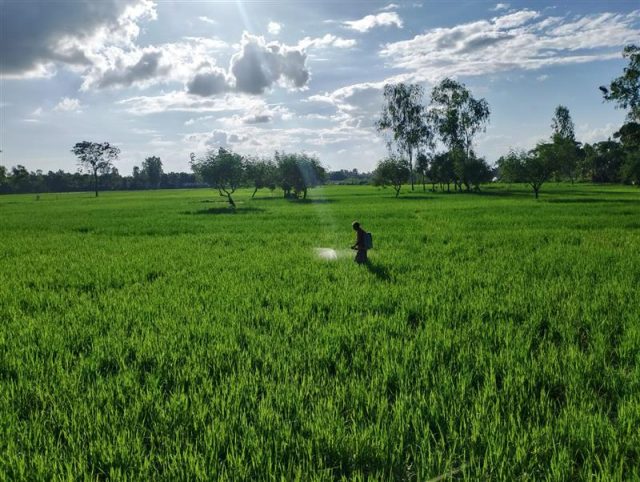Diversifying Cropping for Sustainable Farming: Challenges and Opportunities in Bangladesh
- From
-
Published on
24.04.25
- Impact Area

Sharif Ahmed and Humnath Bhandari
Agriculture in Bangladesh is predominantly focused on rice, with approximately 75% of arable land dedicated to its cultivation. Farmers in the country cultivate rice up to three times a year, with the rice-rice cropping pattern covering about 27% of the country’s agricultural area. In certain regions, particularly in Northern Bangladesh, this figure can reach as high as 60% (Nasim et al. 2018).
Rice serves as the staple food for the people of Bangladesh, making food security synonymous with ensuring sufficient rice production. To meet the growing demand for rice, the adoption of modern high-yielding varieties (HYV) has increased significantly, with around 90% of farmers currently using these varieties. This shift towards HYVs has also led to a rise in the use of agricultural inputs such as fertilizers, irrigation, and pesticides.
However, Bangladesh’s agriculture faces numerous challenges. These include shrinking arable land, increased climate variability, soil degradation and declining fertility, rising prices of agricultural inputs, and a growing need for diversified food production. One particularly alarming issue is the decrease in soil fertility; if this trend continues without interventions to restore soil health, it could have devastating consequences for food production in the country.
Bangladesh boasts a diverse agroecological landscape, and farmers have adapted their crop production systems to address climate-related risks. In the northern and northwestern regions, where most of the flat land is located, crop production is intensive. In contrast, the southern and southwestern coastal areas face multiple crop production challenges, resulting in a less intensive approach, despite the potential for increased crop intensification. The northeastern region, characterized by low-lying areas known as Haor, primarily grows winter rice (boro), although farmers often contend with flash floods that can damage crops during the maturity stage. The eastern and southeastern parts of the country are hilly, making intensive crop production challenging, but these areas have significant potential for agroforestry and high-value crops.
As the population continues to grow, Bangladesh must enhance its food production while also diversifying food options. This increased production needs to occur on less land than is currently utilized for agriculture. Additional challenges include shortages of chemical fertilizers and declining soil health.
To address both current and future food production challenges, Bangladesh must intensify agricultural practices in certain areas by incorporating diversified crops and innovative cropping strategies.
Related news
-

New Genomic Discovery from ICRISAT Could Save Farmers Millions by Preventing Groundnut Sprouting Before Harvest
International Crops Research Institute for the Semi-Arid Tropics (ICRISAT)02.12.25-
Food security
-
Poverty reduction, livelihoods & jobs
Breakthrough study identifies varieties and key genes to halt sprouting before harvest in groundnut …
Read more -
-

From Dirt to Decision-Making: Governance and Soil Health Must Go Hand in Hand
Multifunctional Landscapes Science Program26.11.25-
Biodiversity
-
Environmental health
-
Environmental health & biodiversity
In October, the world convened in Des Moines for the 2025 Borlaug Dialogue under the…
Read more -
-

Cultivating climate-smart rice: How specific cultivars and smarter fertilizing can cut emissions and maintain yield
International Rice Research Institute (IRRI)19.11.25-
Climate adaptation & mitigation
-
Food security
By Bushra Humaira Sadaf A team of researchers from the Bangladesh Rice Research Institute (BRRI), I…
Read more -
